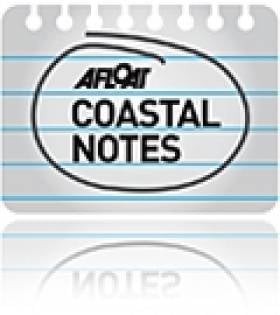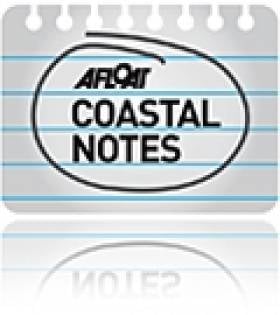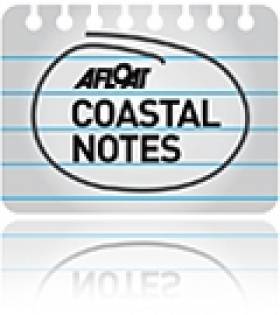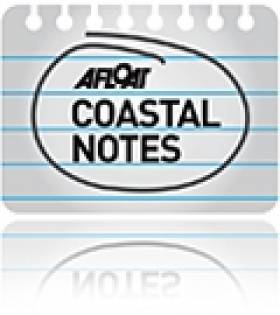Displaying items by tag: EPA
EPA Wants More Info On Dublin Port Dredge-&-Dump Plans
#DublinPort - More details have been requested by the Environmental Protection Agency (EPA) as it assesses Dublin Port's plans to dump 10 million tonnes of "seabed material" in the Irish Sea off Howth.
As previously reported on Afloat.ie, Dublin Port wants to dredge its navigation channel as part of its bid to attract next-generation cruise liners that rivals Dun Laoghaire's own controversial cruise berth plans.
Both projects have prompted concern over the effects of such large-scale dredging and dumping operations in Dublin Bay, an area only designated this past summer as a UNESCO biosphere reserve.
And as The Irish Times reports, the EPA has received 700 submissions on Dublin Port's application alone, with local residents, divers, the fishing industry and conservationists united in their opposition.
Now the EPA has requested a full environmental impact assessment under the EU habitats directive, as well as a revised Natura impact statement, before it further consider's the port company's proposals.
The Irish Times has much more on the story HERE.
'Excellent' Result for Clare Bathing Areas in EPA report
#clarebeaches – A newly published report by the EPA on Bathing Water Quality around Ireland has found that County Clare's 11 designated bathing areas were adjudged to have "Excellent Water Quality" during 2014.
The marine environment news has been described as "hugely significant and positive news" by Clare County Council in light of the newly introduced EU standards for bathing areas, deemed by the EPA to be almost twice as strict as those applied in previous years.
Bathing waters were classified into four categories, namely 'Poor', 'Sufficient', 'Good' and the newly introduced 'Excellent' category. The classification system is based on the levels of E. Coli and intestinal enterococci detected in the bathing water during the 2014 bathing season.
Clare is one of five Local Authority areas to receive "Excellent" classifications for each of its bathing areas, the others being Dun Laoghaire Rathdown, Kerry, Leitrim and Louth.
Clare's 11 bathing areas are Ballyalla Lake (Ennis), White Strand (Milltown Malbay), Ballycuggeran (Lough Derg), Cappa Pier (Kilrush), Bishopsquarter, White Strand (Doonbeg), Kilkee, Spanish Point, Lahinch, Fanore and Mountshannon (Lough Derg).
"This is a magnificent achievement for County Clare and those who work throughout the year to safeguard our bathing areas from environmental pollution and to ensure that the public can enjoy these locations in the knowledge that they are bathing in clean waters," stated Councillor John Crowe, Cathaoirleach of Clare County Council.
He added: "This clean sweep for Clare is something that all tourism interests in the County should be aware of as we must now promote our quality beaches and other bathing locations, particularly in light of the growing numbers of visitors arriving in Clare during their journey along the Wild Atlantic Way."
"I wish to pay tribute to the Environment Section of Clare County Council and those living and working in the vicinity of Clare's 11 bathing locations for their due diligence and hard work in delivering this result. It's one that benefits our County's reputation and of course, the environment," said Councillor Crowe.
"The Council is delighted that each of the 11 designated bathing areas that it monitors achieved 'Excellent' status. This achievement is notable in light of the considerable disruption caused to many locations during the storms of early 2014, as well as the newly introduced standards for assessing bathing areas which are almost twice as strict as those previously applied. Our goal now is to maintain these high standards throughout 2015," explained Paul Moroney Senior Engineer, Clare County Council:
Commenting on the bathing water quality results, Dr Matthew Crowe, Director of the EPA's Office of Environmental Assessment, said: "Overall, the quality of Ireland's bathing waters continues to be very good and new standards introduced in 2014 provide a much higher level of protection for bathers."
"Disappointingly, seven identified bathing waters have been assessed as being of poor quality. The relevant local authorities and Irish Water have put management plans in place to tackle the main pollution risks at these beaches. The test will be whether or not we see the necessary improvements in water quality at these beaches," added Dr. Crowe.
The summary report 'Bathing Water Quality in Ireland – A Report for the Year 2014' is available to download from www.epa.ie.
#CoastalNotes - The Environmental Protection Agency (EPA) insists there was "nothing underhand" about its amendments to a 2007 licence for Shell's gas terminal at Bellanaboy in Co Mayo.
The Irish Times has a report on Tuesday's opening remarks of a three-day action at the Commercial Court, where it was alleged that the EPA intended to amend an earlier licence for the facility despite a more recent one being quashed by the High Court over environmental concerns.
As previously reported on Afloat.ie, local man Martin Harrington had claimed the EPA failed to carry out a proper Environmental Impact Assessment of the north-west Mayo region to meet EU requirements.
The outcome of that case last October was hailed as a victory for the long-time campaign against the controversial Corrib Gas Project.
Harrington's latest action is a judicial review challenge aimed at quashing the amendments to the 2007 licence. The Irish Times has more on the story HERE.
#CoastalNotes - More than 97% of Ireland's bathing areas meet the EU's minimum standards for water quality in new figures announced today 2 May - though 21 waters have been stripped of the top ranking.
The latest figures for 2012 were released today in a new report from the Environmental Protection Agency (EPA), whose director general Laura Burke said that the "quality of Ireland's bathing waters remained very high despite remarkably wet summer weather in 2012".
As reported last year on Afloat.ie, water runoff from heavy summer flooding led to elevated levels of E.coli in many coastal areas, causing the temporary closure of beaches in Cork, Galway and North Dublin.
It's this rise in levels of harmful bacteria above mandatory EU safety levels that resulted in the poor performance of some perennial bathing favourites in the 2012 figures, as The Irish Times reports.
The number of beaches meeting the EU's stricter 'good' bathing quality standards fell from 112 in 2011 to 91 waters last year.
EPA senior scientific officer Peter Webster told The Irish Times that the fall "is disappointing but I'm surprised it was not more".
And despite the drop, three local authorities - Dun Laoghaire-Rathdown, Sligo and Leitrim - managed to achieved 'good' status for all of their designated bathing areas.
The worst performing beaches were Clifden in Galway, Fountainstown in Cork, Ballyheigue in Kerry and Rush in North Dublin, all of which were ranked as 'poor' for water quality.
Remedial water treatment works are planned for Clifden, while it's reported that no cause was found for a single "uncharacteristically high" sample taken from Ballyheigue.
Corrib Pipeline Go-Ahead Rests With Energy Minister
Energy Minister Eamon Ryan will issue a decision "in the coming weeks" on Shell Ireland's plans to complete the Corrib gas pipeline, The Irish Times reports.
The news follows yesterday's ruling by An Bord Pleanála which approved revised plans final section of the controversial pipeline.
Shell also requires licencing from Minsiter for the Environment John Gormley and the Environmental Protection Agency (EPA) for the completion of the pipeline under the conservation area of Sruwaddacon esturary to Shell's Ballinaboy gas terminal.
It would be a further two years before the pipeline is fully operational.
An Bord Pleanála's Inspector Martin Nolan commented that the "clarity and transparency" of Shell's revised application gave "confidence that the safety of the public is fully protected".
However planning was only approved with 58 conditions related to the construction and management of the 8.3km pipeline - including extra security at the landfall valve at Glengad, which has raised the ire of local residents at last year's oral hearings.
The Irish Times has more on the story HERE.
































































